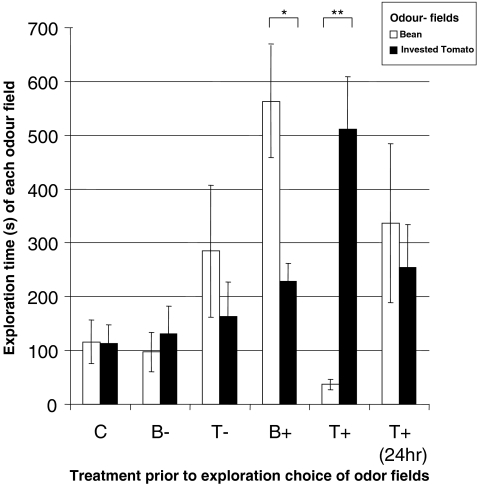Fig. 4.
Innate and acquired preference for spider mite-infested- and uninfested plant odors for which mites have no prior experience. Bars represent the time mites spent in each odor field (during 30 min). Black represents spider mite-infested tomato (HIPV source), white represents uninfested bean (no HIPV source). Significance was tested with a paired sample t-test (* P < 0.05, ** P < 0.001). C: without prior experience, predatory mites do not invest more time in the exploration of the HIPV source than in the alternative (N = 11). B−: mites were starved in the arena for 24 hr, while both sides contained bean leaves. There was no evidence of an acquired aversion (N = 10). T−: Starved mites were restrained for 15 min above the infested tomato field without food (N = 8). There is no evidence of a non-associative acquired response as a result of this treatment. B + and T + : Starved mites were allowed to feed for 15 min in the presence of either odor, the mites associate the odor with the reward (N = 15 and N = 16). T + (24 hr): Mites were first starved, subsequently allowed to forage in the arena, while the tomato patch contained food and the bean patch was unrewarded. Subsequently, the mites were starved for 24 hr until tested (N = 12). The result suggests that the memory was lost within 24 hr

